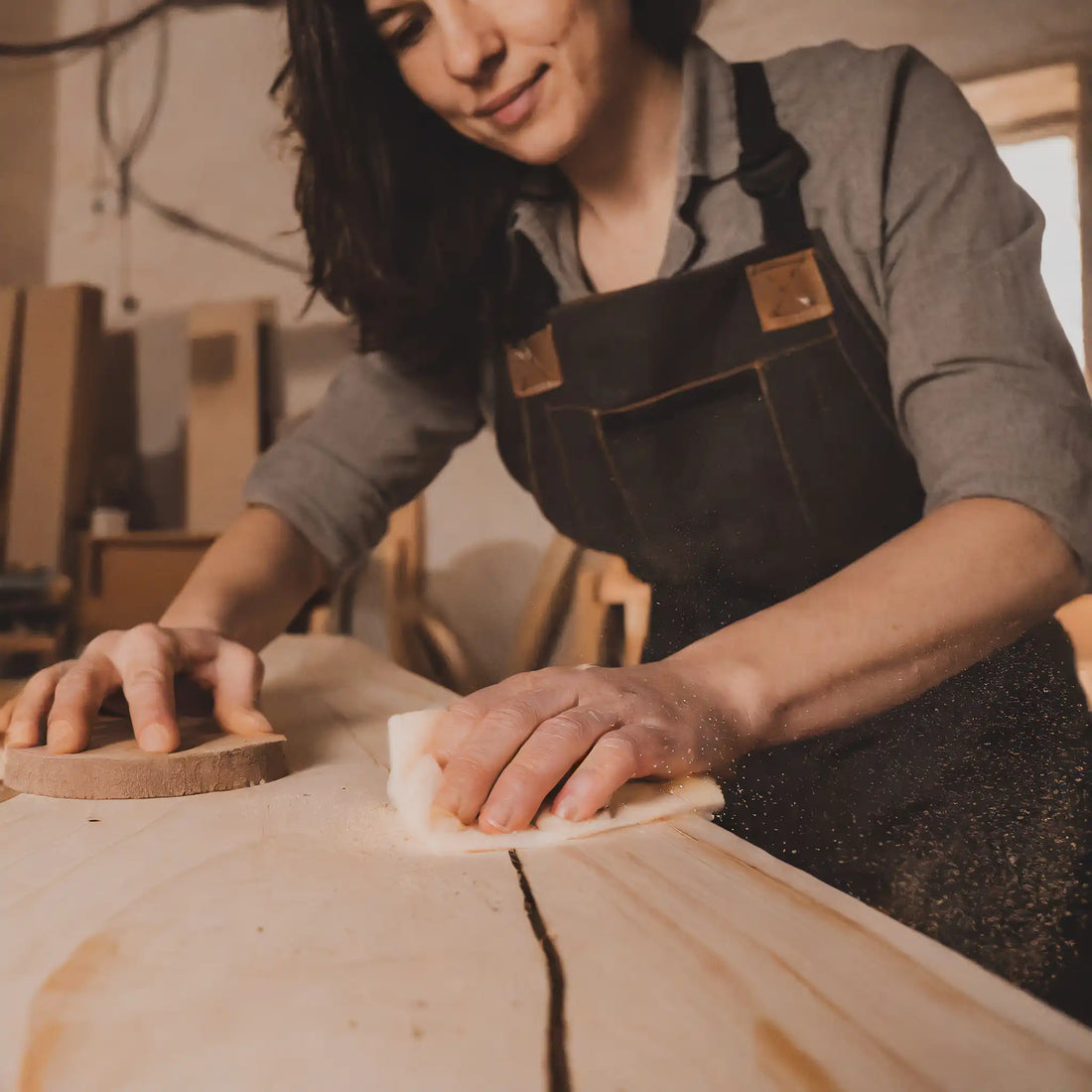
How often should a wood surface be maintained? A practical guide to proper wood care.
How Often Should You Care for Wood Surfaces?
A practical guide to proper wood care
The Importance of Wood Care
Wood surfaces are not only aesthetically pleasing – they’re also functional and durable, especially when properly maintained. Regular care is essential to preserve the natural beauty of wood and extend its lifespan.
In this comprehensive guide, you'll learn everything you need to know about wood care – from the basics to specific techniques and recommended care intervals.
Why Wood Needs Regular Maintenance
Wood is a natural material that reacts to environmental factors like humidity, temperature, and light. Without proper care, it can dry out, crack, or discolor.
Regular maintenance helps wood stay beautiful, functional, and resilient over time.
The right care keeps wood supple, prevents warping, and maintains its structure. High-quality furniture, flooring, and countertops especially benefit from consistent upkeep, preserving their natural appearance for many years.
Factors That Influence Wood Care Frequency
How often you need to maintain your wood surfaces depends on several factors:
-
Wood type: Hardwoods like oak or teak are more durable and need less frequent care than softwoods like pine or spruce.
-
Surface finish: Oiled surfaces usually require more frequent care than lacquered ones, since oil naturally breaks down over time.
-
Usage intensity: Heavily used items like dining tables or countertops need more regular attention than less-used furniture.
-
Environmental conditions: Spaces with high humidity or temperature swings can stress the wood and call for more frequent maintenance.
General Guidelines for Maintenance Intervals
While exact intervals can vary, here are some common recommendations:
-
Oiled furniture: Depending on use, oil furniture 1–3 times per year. A fresh coat before and after the heating season helps prevent drying.
-
Lacquered furniture: These surfaces are more robust. An annual cleaning and occasional touch-up is usually sufficient.
-
Outdoor furniture: Exposed to weather, outdoor wood should be treated at least once a year—ideally in spring—with suitable protective products.
Step-by-Step Wood Care Routine
1. Sanding (if needed)
If the surface has scratches or rough areas, gently sand along the grain with fine sandpaper (180–240 grit). Remove all dust afterwards – we recommend using our sanding pad for the best results.
2. Cleaning
Start by removing dust and dirt. Use a soft, slightly damp cloth to wipe down the surface. For tougher grime, a mild soap solution is ideal. Our dust removal rag is perfect for regular dry cleaning.
3. Applying oil
Use a high-quality wood oil like premium wood elixir. Apply evenly with a soft cloth or brush. Let it absorb according to the product instructions.
4. Drying
Allow the oiled surface to dry completely – depending on the oil and room conditions, this may take 12 to 24 hours.
Special Tips for Different Types of Wood
-
Oak: Very durable. One annual oiling is often enough to protect the surface and highlight the grain.
-
Teak: Naturally rich in oils, but still benefits from occasional oiling (e.g. with teak oil) to maintain its golden tone and prevent greying.
-
Pine: Softer and more prone to scratches. Requires more frequent care – 2–3 oilings per year help protect against wear.
Common Wood Care Mistakes – and How to Avoid Them
-
Too much moisture: Avoid cleaning with overly wet cloths. Excess water can cause the wood to swell.
-
Harsh cleaning products: Chemicals can damage the surface. Stick to gentle, wood-safe cleaners.
-
Inconsistent care: Irregular or infrequent maintenance can cause drying and cracking. Stick to a care schedule that suits your wood type and usage.
Choosing the Right Wood Care Product
The best product depends on your wood type, surface treatment, and desired finish:
-
Oils: Penetrate deeply, enhance the grain, and protect from within while allowing the wood to breathe.
-
Waxes: Sit on the surface, offering a soft sheen and extra protection – ideal for low-use furniture.
-
Lacquers: Create a sealed, durable layer that resists moisture and scratches. Offer long-term protection but change the natural look.
Conclusion
Wood surfaces require regular care to stay beautiful and last long. How often you need to care for them depends on the wood type, finish, and environmental factors.
Oiled wood surfaces should be maintained 1–3 times per year, while lacquered furniture usually needs less frequent upkeep.
With the right care routine, your wood surfaces will remain resilient, protected, and beautiful for years to come.
